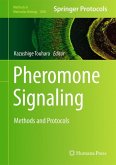Understanding live cells at the single molecule level is the most important and single major challenge facing biology and medicine today. Over the past 15 years, there has been a renewed understanding of living cells at the molecular level. Atomic Force Microscopy, Laser Force Microscopy, single secretory vesicle patch clamp studies, highresolution electron microscopy, and x-ray diffraction, are some of the tools now being used to unravel the intricacies of a living cell at the molecular level. Opening with an explanation of Materials and Methods, NanoCellBiology then moves through discussions of porosome discovery, calcium and SNARE-induced fusion, and vesicle swelling before winding up in a final chapter of conclusions and future studies. Succinctly packaged as SpringerBrief, this book is a must for those studying or conducting research in cell biology, biochemistry or nanobiology/nanotechnology. This book will be invaluable to faculty & graduate students involved in Nano Courses; Cell Biology Courses; Biophysics Courses; and Biochemistry Courses as well as practicing Cell Biologists, Biochemists and BioPhysicists.
"This is a reference discussing the molecular mechanisms of the following problems: Exocytocis, secretion of hormones in pancreatic and excitable cells. ... This reference is of use to physiologists, biochemists, cell biologists, and membrane experts." (Joseph J. Grenier, Amazon.com, September, 2015)








